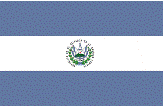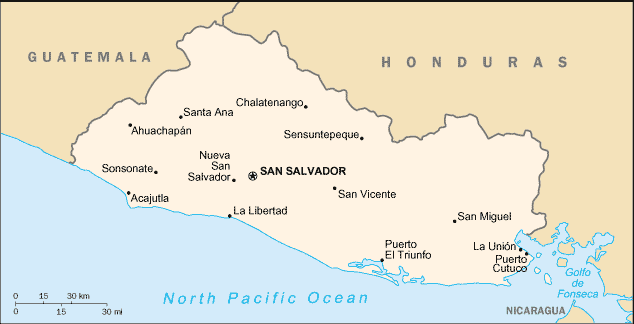|
El Salvador
|

|
Capital: San Salvador
Population: 6,453,553
Brief History of El Salvador:
The original inhabitants of El Salvador were the Native American tribes of the Pocomames, the Lencas, and the Pipils.
The Spanish were the first Europeans to visit the area of El Salvador. It was Spanish Admiral Andres Nino who first arrived in 1522. A few years later the conquistador Pedro de Alvarado and his brother Gonzalo arrived. They conquered the area and soon the village of San Salvador was established.
The area would stay under Spanish rule for many years until 1811 when a Priest named Jose Matias Delgado helped lead a rebellion against Spain. Together with other provinces from Central America, El Salvador declared its independence in 1821.
Much of El Salvador's history since then has been marred by civil war and unrest. Civil war in the 1980s tore the country apart and many people died. In 1992 peace was made with the rebels and some level of democracy was established.
The Geography of El Salvador
Total Size: 21,040 square km
Size Comparison: slightly smaller than Massachusetts
Geographical Coordinates: 13 50 N, 88 55 W
World Region or Continent: Central America
General Terrain: mostly mountains with narrow coastal belt and central plateau
Geographical Low Point: Pacific Ocean 0 m
Geographical High Point: Cerro El Pital 2,730 m
Climate: tropical; rainy season (May to October); dry season (November to April); tropical on coast; temperate in uplands
Major cities: SAN SALVADOR (capital) 1.534 million (2009), Santa Ana, San Miguel
The People of El Salvador
Type of Government: republic
Languages Spoken: Spanish, Nahua (among some Amerindians)
Independence: 15 September 1821 (from Spain)
National Holiday: Independence Day, 15 September (1821)
Nationality: Salvadoran(s)
Religions: Roman Catholic 83%, other 17%
National Symbol: turquoise-browed motmot (bird)
National Anthem or Song: Himno Nacional de El Salvador (National Anthem of El Salvador)
Economy of El Salvador
Major Industries: food processing, beverages, petroleum, chemicals, fertilizer, textiles, furniture, light metals
Agricultural Products: coffee, sugar, corn, rice, beans, oilseed, cotton, sorghum; beef, dairy products; shrimp
Natural Resources: hydropower, geothermal power, petroleum, arable land
Major Exports: offshore assembly exports, coffee, sugar, shrimp, textiles, chemicals, electricity
Major Imports: raw materials, consumer goods, capital goods, fuels, foodstuffs, petroleum, electricity
Currency: US dollar (USD)
National GDP: $44,580,000,000
** Source for population (2012 est.) and GDP (2011 est.) is CIA World Factbook.
Back to Geography Home Page
